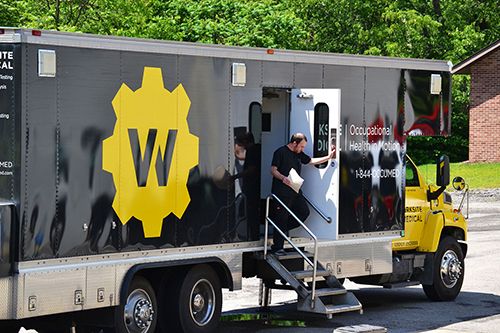Making Carbon Monoxide Protection a Priority
Hundreds of workers experience carbon monoxide poisoning each year.
That poisoning typically occur when fuel-burning equipment and tools are used in enclosed spaces without proper ventilation. Risk of exposure becomes especially high in the winter. That’s because workspaces become sealed tightly to block out cold temperatures.
Related Article: How to Prepare For Cold Weather Work
Last week, OSHA released a statement last week reminding employers to take the necessary steps to protect their workers against the serious and deadly effects of carbon monoxide. The statement, unfortunately, followed an incident in which an airport mechanic died from carbon monoxide poisoning.
On Feb. 5, 2019, while three aircraft mechanics were repairing a private airplane. One of the workers called 911 after seeing the other two affected, and all were rushed to the hospital. One of those poisoned included a responding firefighter.
Investigators believe the source of the carbon monoxide was a malfunctioning heater. As a result, a 29-year-old mechanic lost his life.
Carbon Monoxide: Who it Affects & Warning Signs
Colorless and odorless, carbon monoxide is difficult to detect. That’s why it’s important for employers and workers to recognize the symptoms of overexposure.
Anything that uses combustion to operate is a source of carbon monoxide. That includes: Power tools, compressors, pumps, welding equipment, furnaces, gas-powered forklifts, and motorized vehicles.
As per OSHA, you may be exposed to harmful levels of CO in boiler rooms, breweries, warehouses, petroleum refineries, pulp and paper production, and steel production; around docks, blast furnaces, or coke ovens.
It may also be a risk for the following occupations:
- Welder
- Garage mechanic
- Firefighter
- Carbon-black maker
- Organic chemical synthesizer
- Metal oxide reducer
- Longshore worker
- Diesel engine operator
- Forklift operator
- Marine terminal worker
- Toll booth or tunnel attendant
- Customs inspector
- Police officer
- Taxi driver
Overexposure symptoms include: Headaches, dizziness, drowsiness, nausea, vomiting, and chest tightening. Large amounts of carbon monoxide can overcome you within mere minutes, causing you to lose consciousness and suffocate.
Recent Article: Breaking Down the Silica Physical Exam
If one or more workers exhibit these symptoms, you should:
- Move the victim immediately to fresh air in an open area.
- Call 911 or another local emergency number for medical attention or assistance.
- Administer 100-percent oxygen using a tight-fitting mask if the victim is breathing.
- Administer cardiopulmonary resuscitation if the victim has stopped breathing.
Rescuers should be skilled at recovery experts. Recovery attempts may lead to fatal levels of CO poisoning.
How to Avoid Overexposure to Carbon Monoxide
Preparation is the best way to keep your team safe from carbon monoxide.
OSHA’s CO standard – 1917.24 – shows a permissible exposure limit of 50 parts per million over an 8-hour time period. Contact a company to test your air quality – we use JoeSafety.net – if you believe there is risk.
Here are a few ways to avoid exposure as an employer:
- Install an effective ventilation system
- Avoid the use of fuel-burning equipment and vehicles in enclosed or partially enclosed spaces
- Use carbon monoxide detectors in areas where a hazard may exist
- EDUCATE YOUR TEAM! Provide them with all of the information in this blog. Create a written control plan. Be proactive.
As an employee, you can:
- Report any situation to your employer that might cause CO to accumulate.
- Be alert to ventilation problems—especially in enclosed areas where gases of burning fuels may be released.
- Report promptly complaints of dizziness, drowsiness, or nausea.
- Avoid overexertion if you suspect CO poisoning and leave the contaminated area.
- Tell your doctor that you may have been exposed to CO if you get sick.
- Avoid the use of gas-powered engines, such as those in powered washers as well as heaters and forklifts, while working in enclosed spaces.
Make employee health a priority with regular medical surveillance testing. At Worksite Medical, we’re here to help keep your team safe, and your workplace compliant.
We bring everything from respirator fit testing and blood analysis, to OSHA physicals and audio exams right to your job site. Never send your team away for testing again. Go mobile, and let us come to you!
Complete the form below to schedule, or to get your free quote! If you’d rather call, then you can contact us at 1-844-622-8633.

Create a Less Disruptive, More Productive Occupational Health Plan with Worksite Medical!
Are you looking for a way to keep your team safe, while also limiting risk and increasing production? Simplify your medical plan today. We help team leaders like you develop less disruptive, more convenient occupational health plans that comply with complex industry standards, thus creating a healthier, more productive workforce. Take control of your medical testing program, and make sure your team is within OSHA requirements.




